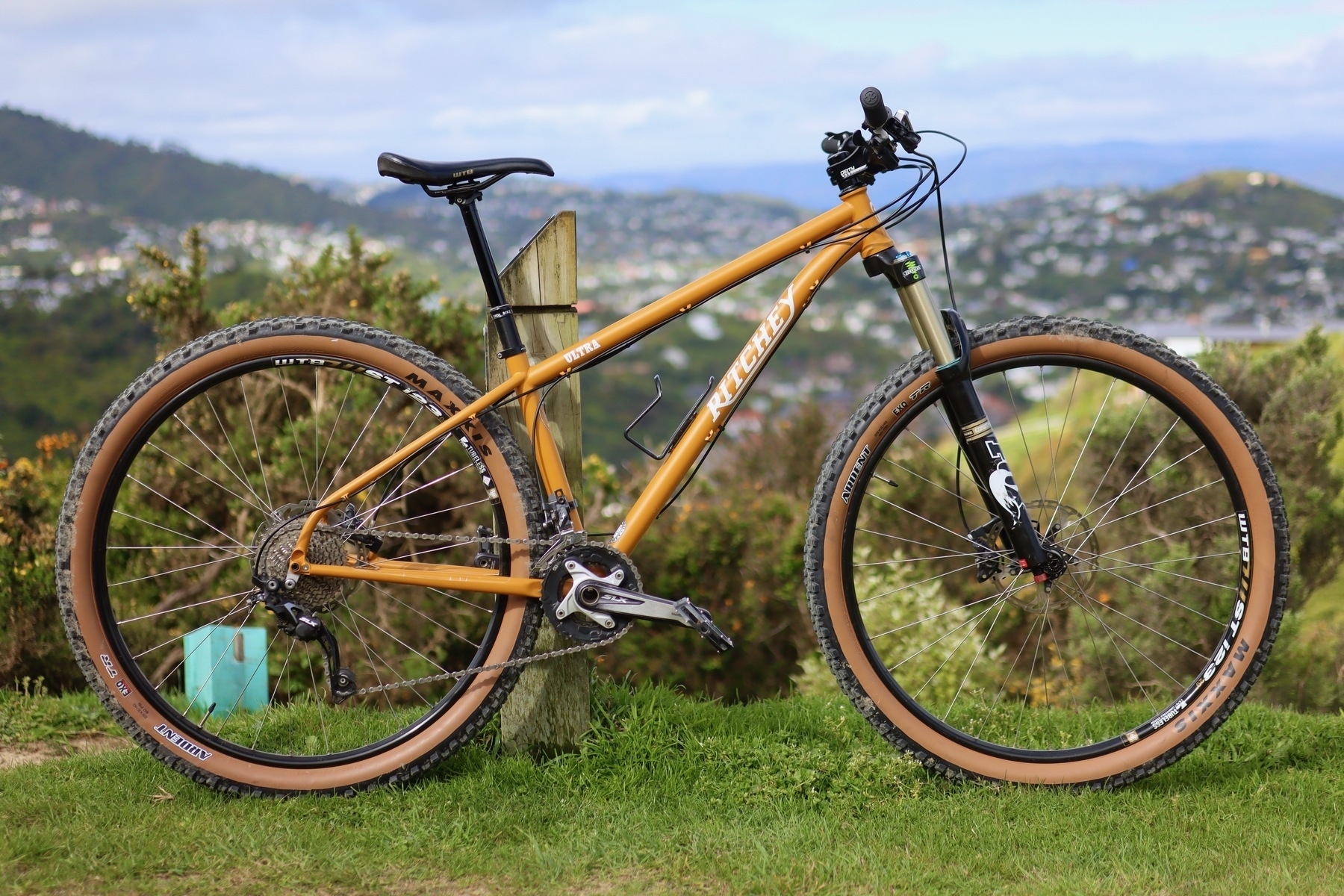I posted about my new mountainbike a week or so ago, and on Friday I got to pick it up from Jonty’s shop just in time for the long weekend. It could not have been better timed considering the good weather forecast!
I rode it home but with a little detour up Silversky to take a glamour shot of the clean and shiny. It may never look as nice as this again.

I hadn’t ridden my old Kona Satori much since getting a fat-tired road bike, first the Surly Straggler and more recently a Ritchey Outback. By comparison the dual-suspension Satori increasingly felt heavy and sluggish, with the rear suspension feeling like it was sucking energy from me on every uphill pedal stroke. And for lots of easy mountain bike tracks the fat tired road bikes were just fine.
I still felt there was room for a mountain bike in the shed though, so long as I could be guaranteed to ride it more. So I decided I wanted a nice steel hardtail, and settled on the Ritchey Ultra. I like the bike brand (and love my Outback); and its geometry is pretty much identical to the Satori.
Most steel hardtails seem orientated towards people who like far more exciting terrain than I do, whereas the Ultra seems way more balanced and hopefully won’t make any statements about me being some kind of insane shredder. I’m not breaking any records anymore, and I’m not even breaking any of my own from 5 years ago. I just want to get out into the trees or hills and return tired and happy.
Given the value of the Satori after 10 years was probably about $0 (despite it only having travelled about 3,500km) I figured I could save cost and waste by using as many components as possible off the old bike on the new bike.
Jonty did a whole lot of magic to make this work.
- the fork had to go to Shockcraft for shortening and servicing; and
- the rear wheel needed a new hub and spokes from Roadworks so that it would fit the new Boost standard that was invented after the Satori.
That was probably the easier stuff. Since 2013 lots of small things have changed; a major one causing issues here being the presumption that a mountain bike will only have one cog up front so Jonty had to source a special front derailleur hanger to fit with the one off the Satori.
He was able to reuse all the drivetrain (chain, gears, and cranks; reasonably nice Shimano SLX stuff) and brakes (more SLX stuff). It was a bit tricky to fit the mechanism for the front derailleur into the tiny space between rear wheel and seat post, but he did it and it changes flawlessly.
We had to get a new dropper post as the old one wouldn’t fit, and Jonty advised me I should also get a new wider handlebar and shorter stem so we did that too.
So after all that how does it ride?
I love it. It’s only a kilo lighter than the Satori - using all the same components, especially the old wheels doesn’t help here - but it feels a lot lighter and the uphills seem more fun and direct without the rear suspension.
The short stem and wider bar make it more maneuverable and my longer ride today at Makara Peak, whose twisty downward tracks I haven’t ridden in over 5 years, were lots of fun.

So. Now I just need to get out and make a point of using it more.